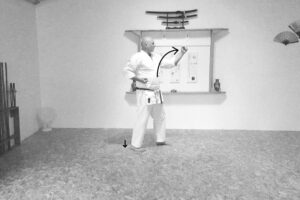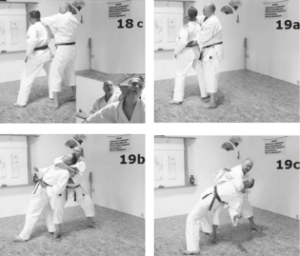 By learning Kata, you get the opportunity to follow in the footsteps of the ancient masters. If you perform Kata with the right spirit, confidence, and humility, you will eventually understand the thinking and meaning behind these.
By learning Kata, you get the opportunity to follow in the footsteps of the ancient masters. If you perform Kata with the right spirit, confidence, and humility, you will eventually understand the thinking and meaning behind these.
In the past (except Kumite), Kata was the only way to train, later the concept of Kihon came into being. Training Kata was a way of remembering techniques, as well as improving one’s skills, by diligently training Kata repeatedly.
When performing a Kata, you must observe the surroundings and react quickly. It takes vigilance to perform a Kata (Zanshin). Your breathing is adapted to the respective techniques; this applies to both defense and offense techniques.

All techniques in a Kata have a meaning, thus there are no unnecessary movements. The application of the techniques should be practiced repeatedly (Bunkai, application of the techniques).
In Kata, the techniques often have several uses and interpretations. Therefore, you must listen intensely when the instructor reviews the techniques. By analyzing the techniques and practical applications of Kata, it contributes to the continued development of Karate. As I have always said, “a Karate style that cannot look beyond its horizon cannot develop, it will stagnate”.
Please feel free to experiment with the techniques of a Kata. Look at other styles and interpretations, you might learn something.
The physical aspect of Kata training.
The performance of Kata contributes to the strengthening of bones and muscles, which keeps the musculoskeletal system healthy. In addition, reflexes and movement are processed faster, which means that you can react faster in a self-defense situation.
”Kata is Kumite if performed correctly”
The mental side of Kata training.
The mental side of Kata training unites body and mind, which are helping to develop you as a whole human being. This does not come from one day to the next but requires diligent and persistent training over many years.
General courtesy will be developed by holding the etiquette during the Kata, and by bowing before and after the performance of Kata.
The performing of Kata should be done in a harmonious and relaxed state, almost like a meditative state.
“Kata is also meditation in motion”
Thanks for reading.
Gert
